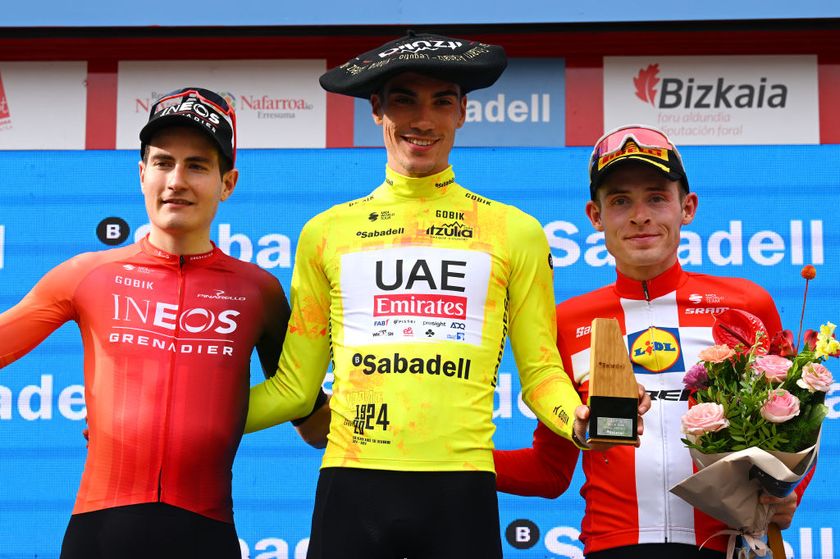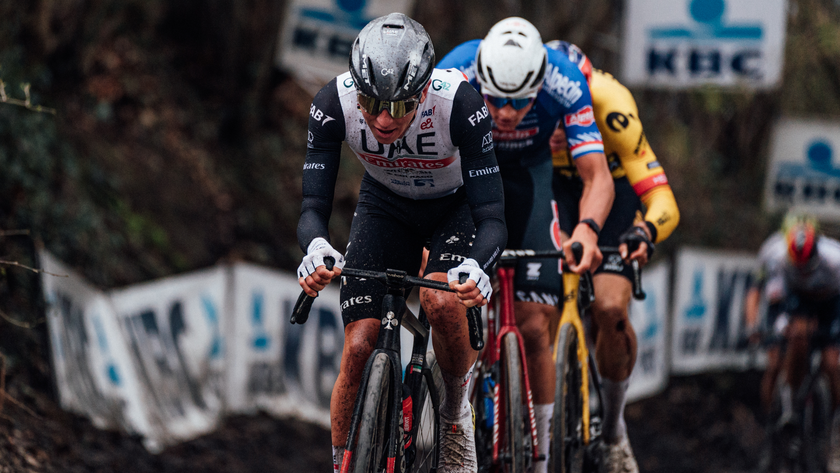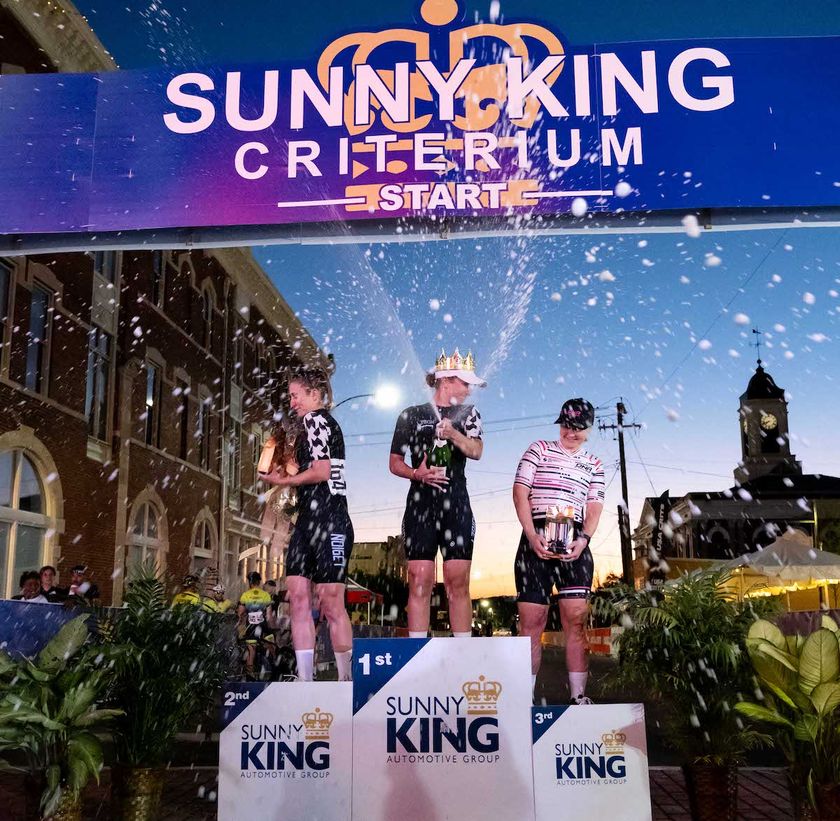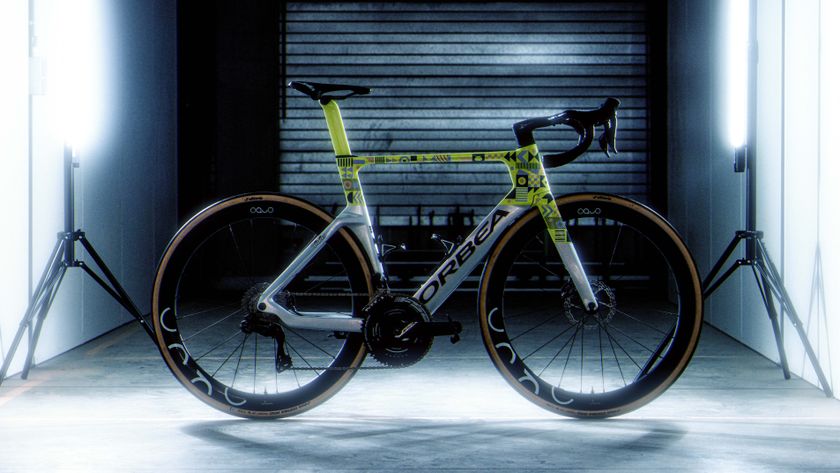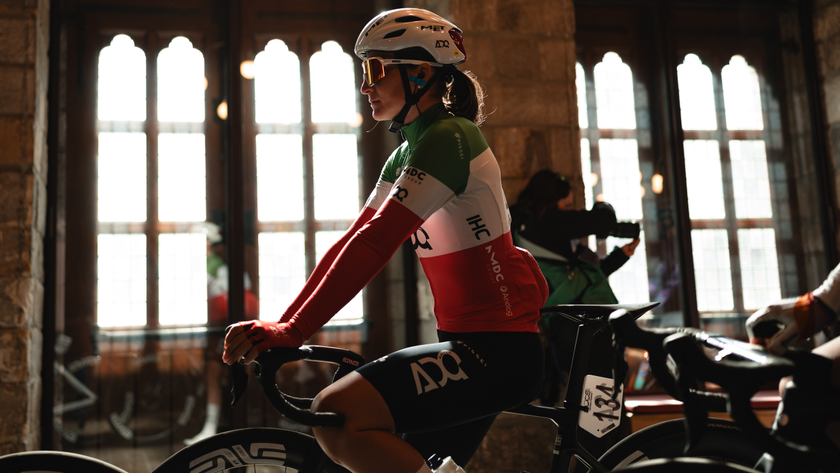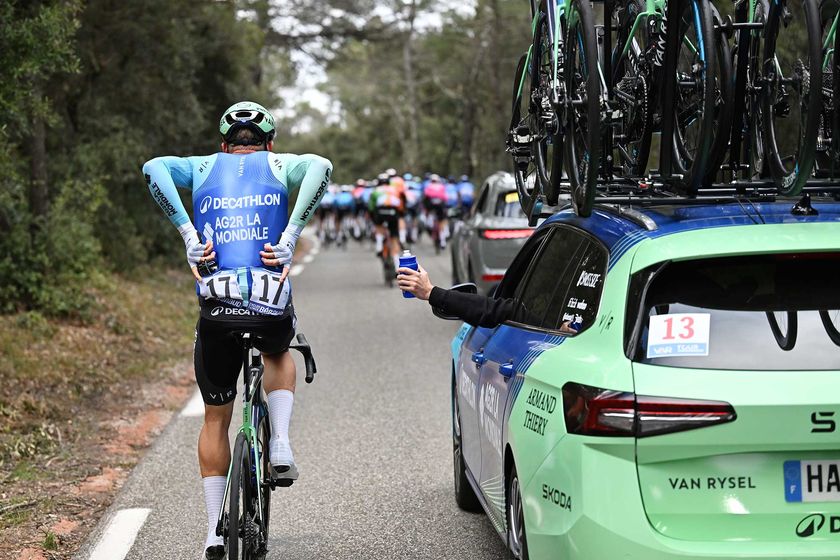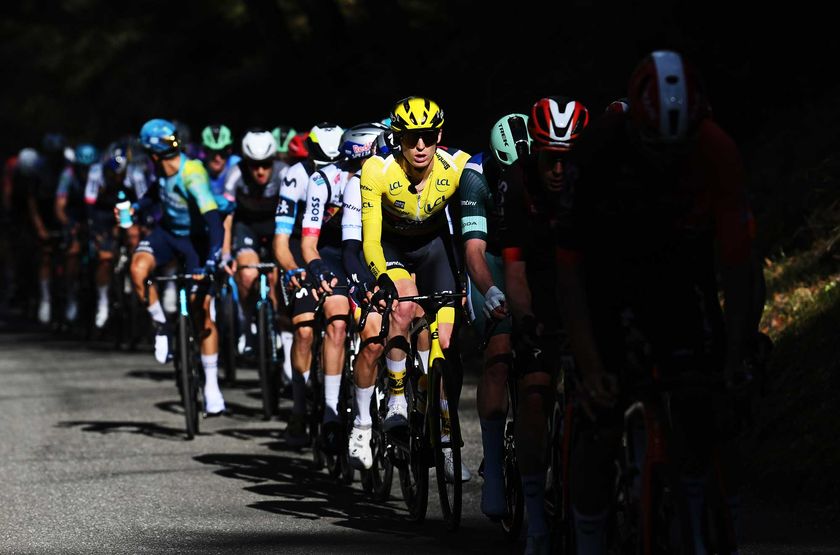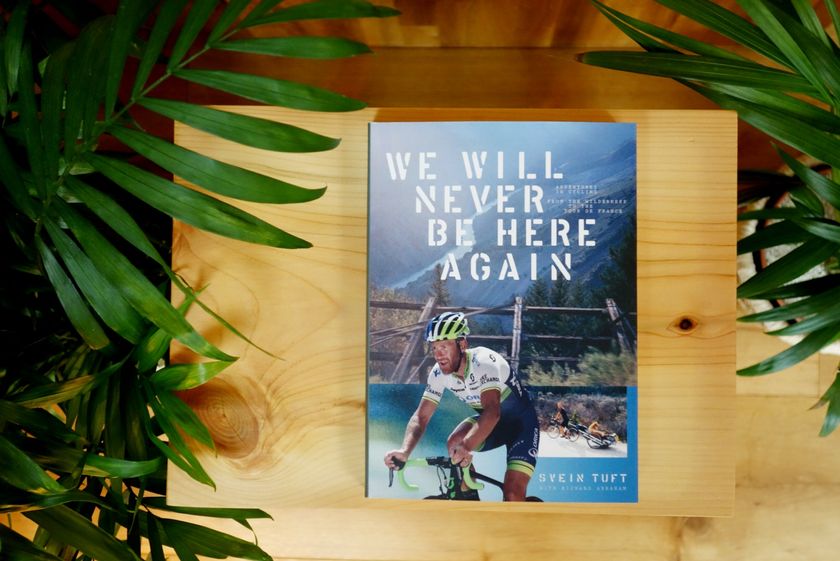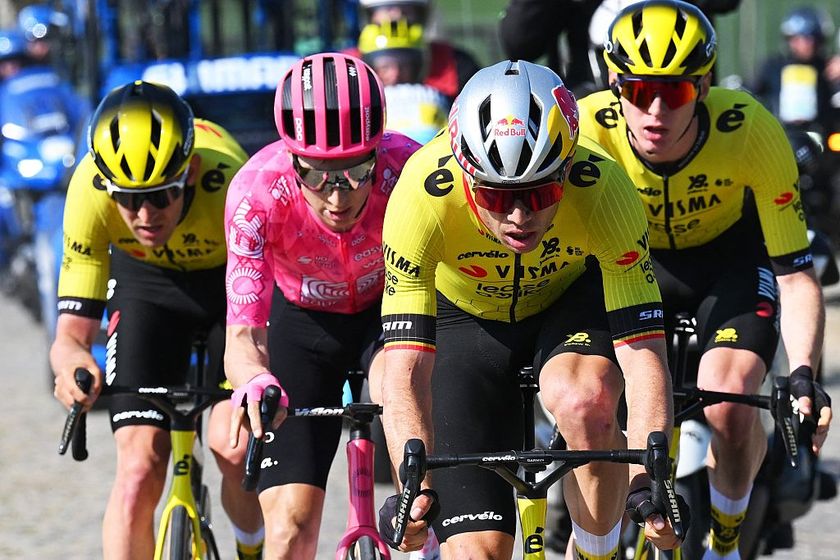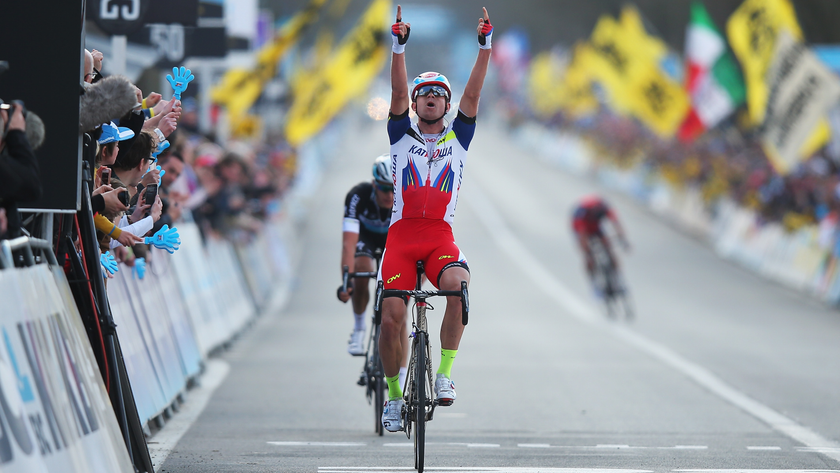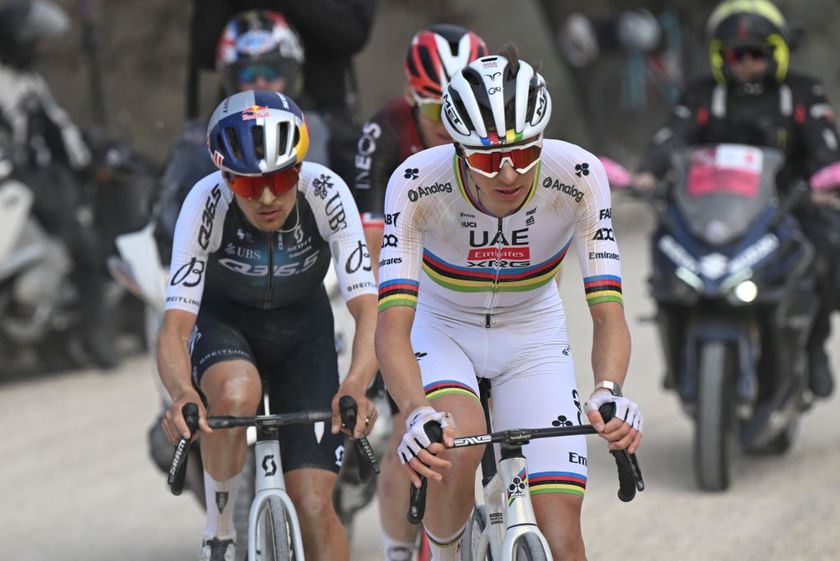5 conclusions from Amstel Gold Race
Gilbert in a league of one, Kwiatkowski out-gunned





Gilbert in a league of one
The superlatives rolled off the tongue on Sunday as Philippe Gilbert made a world-class break look rather ordinary in the final stages of Amstel Gold Race. The Belgian was everywhere – on the attack, on the front, in the wind, and even on the deck at one point – but after his solo demolition at the Tour of Flanders this was an altogether different assault through the hills of Limburg. First, he followed the accelerations of Tiesj Benoot and Sergio Henao, before matching the late attack from Michal Kwiatkowski with the most decisive move of the race. Gilbert was simply unstoppable and the writing was on the wall when the cameras panned across the leading pair with a few kilometres to go. The Team Sky rider’s shoulders were beginning to drop, as he was visibly struggling for air, his cheeks puffed out with the effort, while Gilbert, on the other hand, looked immense. Even when he allowed Kwiatkowski a head start in the sprint, it mattered little, and the way he finished the race suggested that he had more in the tank. For all those superlatives that the television commentators pulled from their suitcases of courage, the measure of Gilbert’s victory was summed up by Kwiatkowski, who acknowledged that he no answer to the Belgian’s might. “Beaten by the better rider.” Enough said.
For Gilbert, the spring ended as soon as he crossed the line, due to a kidney injury picked up in his mid-race fall. Thus ends all talk of a second ‘Ardennes triple’ and leaves Quick-Step with Dan Martin as their sole leader for both Flèche Wallonne and Liège-Bastogne-Liège. Gilbert, however, has rekindled his career in the most astonishing manner, adding two Classics to his palmarès in the space of two weeks. The puzzling question, and there’s no easy answer, is why he went through such a relatively barren spell at BMC. Gilbert and Patrick Lefevere will not lose any sleep over that particular debate.
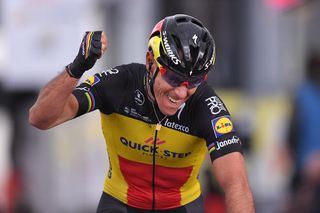
Did Kwiatkowski go too soon?
Having watched Michal Kwiatkowski win Milan-San Remo, a world title, Amstel Gold, Strade Bianche (twice) and a hatful of other races it’s fair to say that the man knows his race tactics. That doesn’t make him the perfect, faultless tactician, but it’s safe to say that he has the nous to tell from which direction the wind is blowing. So when he launched his sprint with 350m to go it was because Gilbert briefly took his eye off the Pole, giving him that split second to jump. Kwiatkowski had already drifted off the Belgian’s wheel, meaning that by the time he built up enough speed the Quick-Step rider was in serious trouble.
Given Gilbert’s form he would have won a straight-up drag race so Kwiatkowski had to try something different. He did that, and for the first moment in the entire race, Gilbert looked vulnerable. Proclaiming that Kwiatkowski should have waited another 75 meters before winding up his sprint is all well and good, but he saw a chance and went for it.
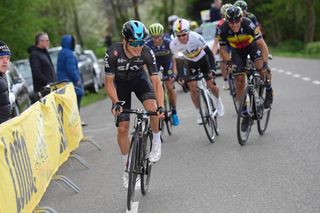
Albasini: the Ardennes nearly man
Few will have circled Michael Albasini (Orica-Scott) as a favourite for the Ardennes but the Swiss rider is nothing but a consistent performer in the races he chooses to excel in – his nine stage wins spanning the Tour de Romandie and the Tour de Suisse are testament to that. However, the 36-year-old is more than just a rider for races within those neutral home borders, and he has been inside the top 10 at the Ardennes Classics on eight occasions – that’s one more than his teammate, Simon Gerrans. His third place in Amstel was his best result in Limburg – Flèche Wallonne is his usual happy hunting ground – and although second place in last year’s Liege-Bastogne-Liege signalled a breakthrough result, it’s hard to see him bettering that this week.
The problem for Albasini is that he does a lot of things well but that he lacks that one ace up his sleeve that Gilbert and the very best can turn over when they need it most. The same could arguably be said of Wout Poels – the man who edged Albasini out in Liege last year – and Albasini will remain a Classics outsider unless lightning can strike twice.
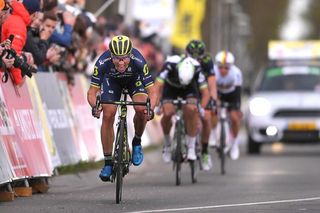
Haas’ near breakthrough
Back in January, we picked Nathan Haas (Dimension Data) to be one of the most sought after transfers on the market this season, and his fine Amstel result only confirms the point. The race – with or without the Cauberg – is the perfect course for the Australian, with the punchy climbs that litter the route perfect for his characteristics. Not blessed with the purest of sprints, the Dimension Data rider relies in his natural power and on Sunday he was in his element. We saw that Gilbert and Kwiatkowski were on another level with the way they moved off the front on the Keutenberg, and in the race for third Haas came up against a rider cut from a similar mould in Albasini.
Get The Leadout Newsletter
The latest race content, interviews, features, reviews and expert buying guides, direct to your inbox!
The search for a podium in major race continues but it’s only a matter of time before the stars align. With regards to his future, the question still stands: will a rival team snap up a bargain now or wait until his price tag rises? Dimension Data have a one-day leader on their hands and given the loss of form shown by Edvald Boasson Hagen, they’d be right to move quickly and tie Haas down.
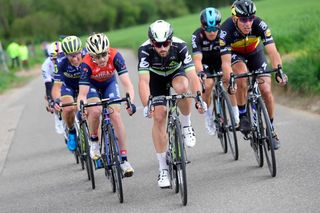
Race organisers take a bow
You wanted a more open race with more attacks and a less predictable final slog up the Cauberg, and the race organisers duly obliged with a parcours that inspired teams to take on the route rather than sit back and passively wait for the final to come to them. The removal of the last ascent meant that non-sprinters had to make their plays from a long way out and the trend we’ve seen in the Classics continued with the key moves forming from outside 40km to go. While the race organisers deserve praise, so do the riders, as they really dictate how a race unfolds. The pre-race thinking was that the faster finishers had a better chance of success with the new route, but the course change simply meant that the heavy hitters – Gilbert, Kwiatkowski, and even the group containing Van Avermaet and Valverde – put the hammer down earlier. The ‘fastmen’ – Colbrelli, Matthews et al – never saw the front of the race again.
The course change gives a welcome shot in the arm to a race that has always lived in the shadows – hidden between the post-Roubaix comedown and the final flickers of Classics life that survive until Liege – but for now Amstel is a race with a spring in its step. This was more like Flanders than the old Amstel. Amen to that.
Daniel Benson was the Editor in Chief at Cyclingnews.com between 2008 and 2022. Based in the UK, he joined the Cyclingnews team in 2008 as the site's first UK-based Managing Editor. In that time, he reported on over a dozen editions of the Tour de France, several World Championships, the Tour Down Under, Spring Classics, and the London 2012 Olympic Games. With the help of the excellent editorial team, he ran the coverage on Cyclingnews and has interviewed leading figures in the sport including UCI Presidents and Tour de France winners.
